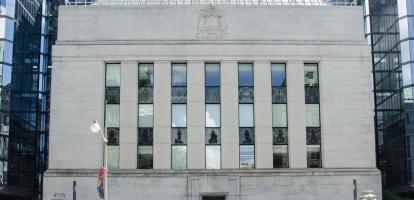Along with much of the world, Canada’s economy has suffered from the COVID-19 pandemic and other events in 2020, notably the shock to global oil markets. How badly? An examination of the immediate data and longer trends indicates significant damage, with a lengthy recovery period ahead.
Let’s start with labour markets, where there are signs of recovery but also growing evidence of damage. The unemployment rate exploded to nearly 14 per cent from 6 per cent during the shutdown from March to May. The rate has dropped steadily since as many displaced workers have been re-engaged, but the second pandemic wave and renewed shutdowns in many provinces have meant more job losses. Employment fell by 63,000 in December, and the unemployment rate rose slightly to 8.6 per cent.
There are many other worrying signs. Long-term unemployment – lasting 27 weeks or longer – has increased sharply and now represents more than one-quarter of those unemployed, with a growing risk of many discouraged workers dropping out of the work force.
Much of the Canadian work force is underutilized. The most recent Statscan data show that one in six people in the potential labour force are employed but working less than half of their usual hours, unemployed or want a job but are not looking for one.
Women, youth, Indigenous people and new Canadians continue to be particularly affected by pandemic-driven unemployment and underemployment. To help minimize long-term scarring, active labour market policy is called for, including enhanced retraining and skills development, facilitating school-to-work transitions for recent graduates, supporting labour market participation by parents and underrepresented groups, and fully recognizing and utilizing the skills of new Canadians.
Economic output has been steadily rebuilding after the deep contraction during the first shutdown period. The consensus among private forecasters is that GDP shrank by 5.8 per cent in 2020, with real growth of 4.8 per cent projected for 2021. Despite this rebound, the survival of many businesses remains under threat. Even with a successful vaccine rollout and a steady return to more normal operating conditions in many sectors, Canadian GDP by the end of 2021 is projected to be about 3 per cent below GDP at the end of 2019.
Perhaps the most serious indicator of damage is the estimated drop in long-term growth performance for the Canadian economy, which economists call “potential.” The recent federal economic statement provided a revised estimate of Canada’s growth potential, taking into account the pandemic shutdown and uneven recovery.
Long-term growth potential has declined by roughly half a percentage point from estimates before the pandemic, to only 1.4 per cent real growth annually. This drop reflects the combined impact of a sharp decline in investment, the effect on labour markets, plus chronically weak productivity growth.
That growth potential matters. Fundamentally, it determines the capacity for improvements to Canadians’ real incomes and living standards. Slower growth squeezes the capacity to fund public spending priorities such as health care, as well as the ability to manage the much higher level of public debt owing to the pandemic policy response. Long-term annual growth that is half a percentage point lower than before the pandemic increases the odds of an eventual tax increase to fund policy priorities and manage public debt.
Canada’s long-term annual growth potential can be raised back toward 2 per cent, but it will require a reversal in labour market and investment trends this year. As noted earlier, some healing is taking place in Canadian labour markets, but there are also still many individuals at risk. The consensus forecast in the economic statement indicated it will be 2024 before the unemployment rate declines to prepandemic levels.
A sustained boost to the level of investment would make a valuable contribution to growth, fostering capital formation and faster productivity growth. Increased public sector investment in infrastructure can partly address the investment gap, but higher sustained private investment will be key to maintaining and building the economy’s productive capacity and the ability to innovate.
While investment in maintenance of the existing capital base will recover somewhat as the economy slowly heals, new capital formation is bound to be more difficult. The scale of investment in energy production, distribution and use with low or no greenhouse gas emissions, along with addressing the transition challenges facing the oil and gas sector, will be critical to the long-term Canadian growth puzzle.
The pandemic has inflicted damage on many individuals and businesses. It is not realistic to expect a return to normal any time soon. However, policy can certainly help guide us through the uneven recovery.
Policy action could usefully focus on minimizing labour market scarring as a top priority. Creating the best possible investment climate with an eye on the transition to an economy with low or no GHG emissions also deserves attention. Maintaining international business tax competitiveness has always been a challenge, but one we cannot ignore. Improving the overall competitive and regulatory environment is another option that is fully within our control; more efficient regulatory processes could be adopted without sacrificing health, safety and other standards.
While there is no single silver bullet for lifting private investment, these actions together will go a long way.
Published in the Globe and Mail
Glen Hodgson is a senior fellow at the C.D. Howe Institute.





